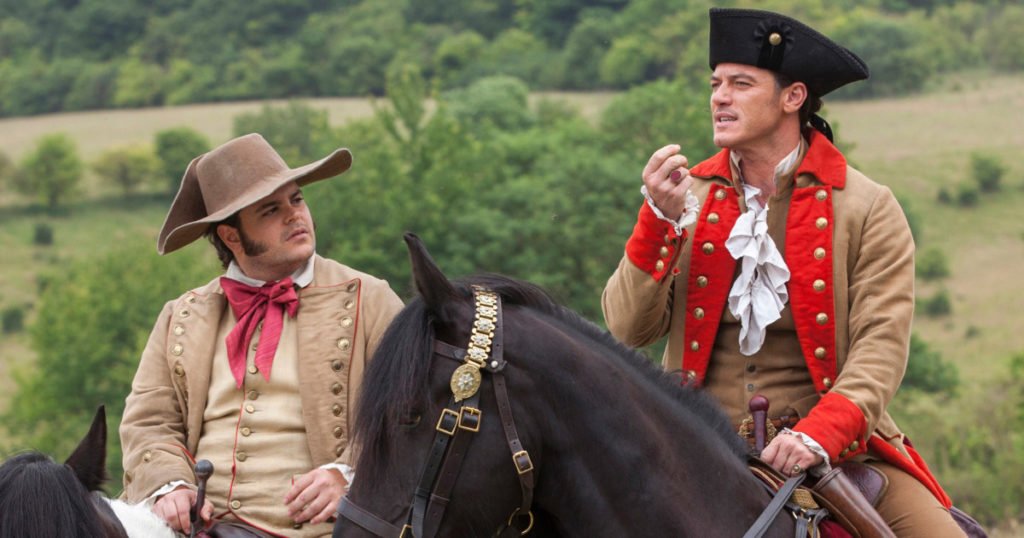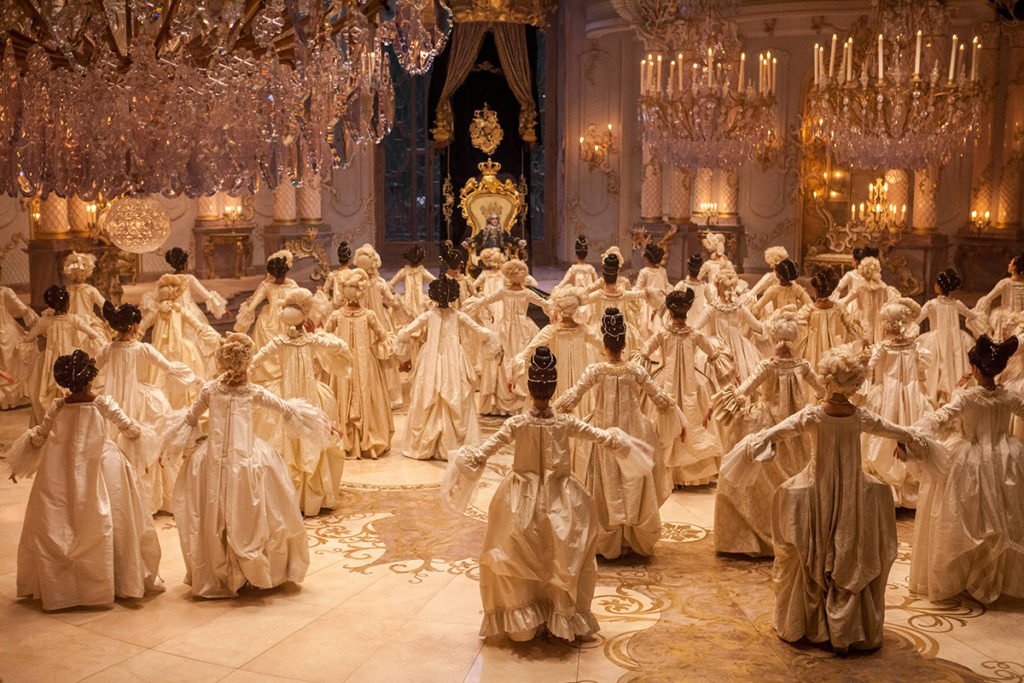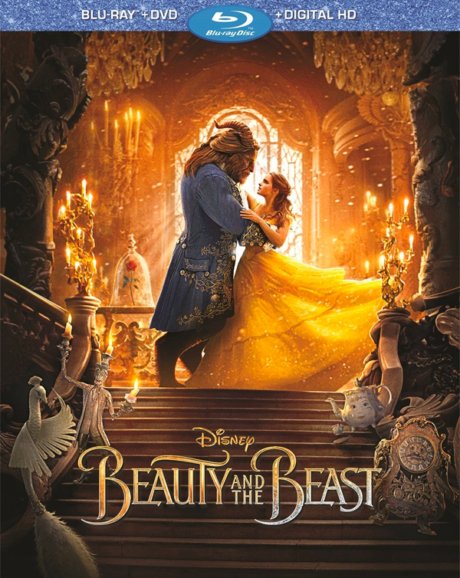Purrr....
- Emma Watson and Kevin Kline
- Music
Hisss!
- Inferior to the original
- Uncanny Valley Beast
- Some weird character designs
Studio
DisneyDirector
Bill CondonGenre
Family, Fantasy, MusicalRated
PGGenre
Family, Fantasy, MusicalTheatrical Release Date (NA)
Mar 17, 2017Release Date (NA)
Jun 6, 2017Film Length
2h 9minDisney’s live-action Beauty and the Beast is a pleasant if uninspired adaptation of the 1991 animated classic.
During the “Be Our Guest” sequence in Disney’s live-action Beauty and the Beast, there are several shots of Belle seated at the dinner table as she watches the dish-and-silverware theatrics in front of her. As fireworks explode around her and the cutlery dances its ever-living heart out trying to please her, the expression on her face, tellingly, is not one of wonderment and awe but of casual approval. Her tepid smile and certainly-not-wide eyes show that while she appreciates all the hard work put into the production, she doesn’t quite know what to make of it.

I watched the animated original when it came out on movie screens twenty-six years ago, and while I wouldn’t call it my favorite movie of the Disney Renaissance–that honor goes to Aladdin–I still enjoy it and consider it to be one of the best animated films ever made. When news spread of a live-action adaptation, I was intrigued. 2014’s Maleficent was a fascinating take on the classic Sleeping Beauty story, while the 2016 live-action remake of The Jungle Book mostly stayed away from the musical roots of its Disney original and forged its own path. I wondered what direction director Bill Condon would take Beauty in, and upon viewing it, it is extraordinarily clear that he opted for a far more conservative, if-it-ain’t-broke-don’t-fix-it route, which is ultimately inferior to the original.
The movie is still a musical with all the previous songs present and accounted for; the main story–with its shade of Stockholm Syndrome–is still the same; the costumes are still the familiar blues, whites, and golds; and even the set designs feel the same. No matter where you look, it’s undoubtedly clear that the filmmakers took great care in bringing many of the original’s key elements into three dimensions, and they are to be commended for the parts where they succeeded.

That said, the movie does take a few liberties with the material. Gaston’s ever-present sidekick, LeFou, is now gay, making him Disney’s first LGBTQ character. And before people start accusing the film of catering to any sort of agenda, it’s a move that first and foremost makes sense for the character. After all, he essentially serves as an utterly devoted manservant, and it’s a great way to explain that relationship to a modern audience and still provide comic relief. In addition to that change, the mystery of Belle’s missing mother has been explained in a new sequence (in case you ever wondered about that at two in the morning), but most notably is the fact that a number of new songs have been inserted throughout the film.
Fortunately, all of these are written by original composer Alan Menken and have lyrics by Menken’s frequent collaborator, Tim Rice. Of these, “Evermore,” in particular, stands out. It’s the only song sung primarily by the Beast, a character whose vocal chops were mostly left out of the original. More importantly, though, it shows how his core beliefs have shifted after meeting Belle, and like any great song in a musical, if it were removed from the production, the overall story wouldn’t make as much sense.
However, not all of the changes that were made were for the better.
The aforementioned missing mother plot point is, for the most part, unnecessary. The audience already knows that Belle has a close relationship with her father, Maurice, and knows that they would do whatever it takes to protect one another. From the initial hostage swap to the later rallying of the villagers, this information is seen throughout the movie and helps drive the story forward. Knowledge of the mother’s fate, on the other hand, does not.
Its absence isn’t a driving force behind any of Belle’s actions and the subsequent revelation doesn’t change her character in any fundamental way. The same goes for her father–he’s the same loving, protective man from beginning to end–so this whole sequence could’ve been left on the cutting room floor.

Similarly, the opening to the movie includes a brand new musical number that doesn’t quite work as well as it should. To its credit, it replaces the original’s stained glass storybook-esque slideshow with a much more dynamic ballroom sequence of the pre-Beast prince at one of his opulent parties, big hair and all. Unfortunately, instead of fully committing to using song throughout to tell the audience what is happening, it relies mostly on voice-over narration taken straight from its animated predecessor.
That said, those criticisms are minor because the scenes themselves appear only once in the movie, so the audience doesn’t have to spend much time dwelling on them. In contrast, the film’s worst parts, the visual misfires, are present for the entire duration of the movie.

What is meant by visual misfires? Let’s use the Beast himself as an example. He is a computer graphics (CG) creation, and it shows. Although motion capture techniques were used by the filmmakers to get a realistic performance from the actor, his face still looked CG in an uncanny valley sort of way. It brought attention to itself every time he was on screen, completely breaking my suspension of disbelief, and when he’s one of the two most important characters in the movie, that’s never a good sign. Call me crazy, but an actor in prosthetic makeup like the early 90’s Beauty and the Beast TV series might have been a better route to take.

Such misfires are not limited to the Beast; the designs for a few of the characters is just plain strange. Madame de Garderobe, the opera-singer-turned-wardrobe has a talking curtain face that feels more at home on a low-budget, local children’s show than on a multimillion dollar production. Moreover, Mrs. Potts, the lovably round teapot from the animated original is now a rectangular tea box with eyes and a mouth that’s, quite frankly, kind of creepy. No wonder Maurice and the villagers are scared by her and Chip.

Fortunately, Emma Thompson does an excellent job voicing the teapot, giving her an Eliza Dolittle-esque accent, which makes sense for the younger characterization, but she cannot top Angela Lansbury’s vocal performance in the iconic ballroom dance scene. On the human side, Emma Watson is absolutely perfect as Belle, even if her singing does have a hint of auto-tune here and there, and Kevin Kline is in fine form as her father, Maurice. Similarly, Luke Evans puts the sleaze in sleazebag as Gaston.
Ultimately, though, I feel that this movie is little more than a cash grab by Disney to refill their coffers after some expensive movie failures and acquisitions, as opposed to being driven by a real creative desire to remake it into something new and (yes) magical. Taken wholly by itself, it’s actually a solid film, but I simply cannot recommend it over the 1991 original.









